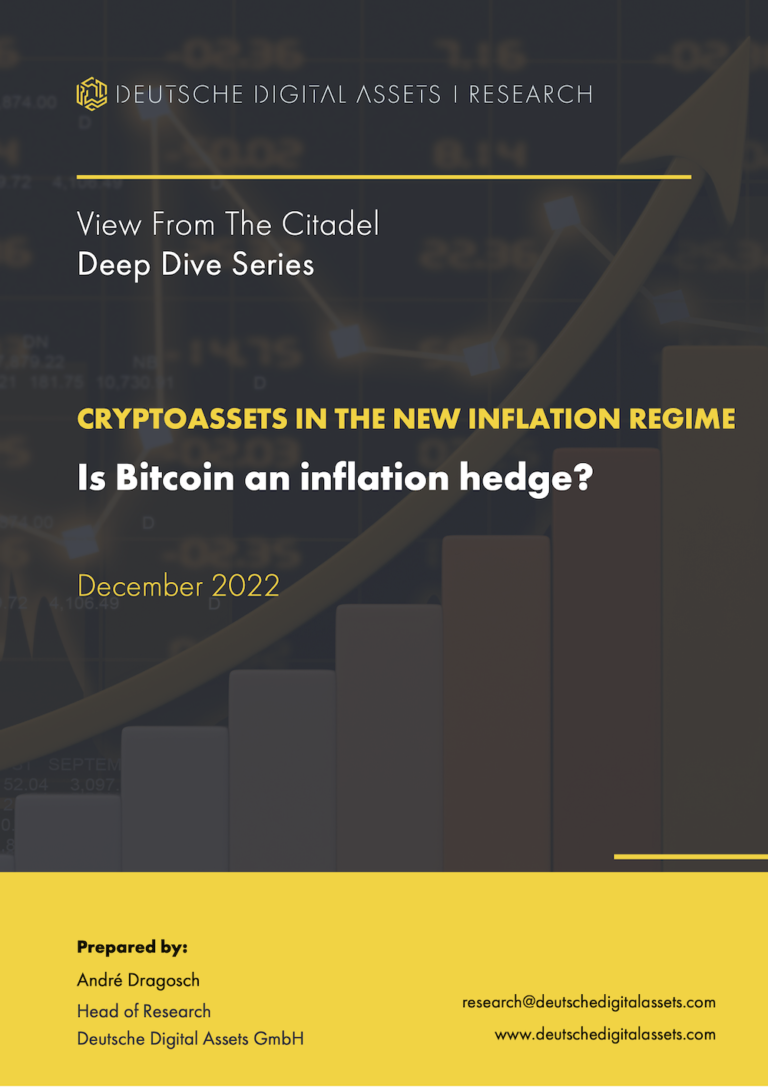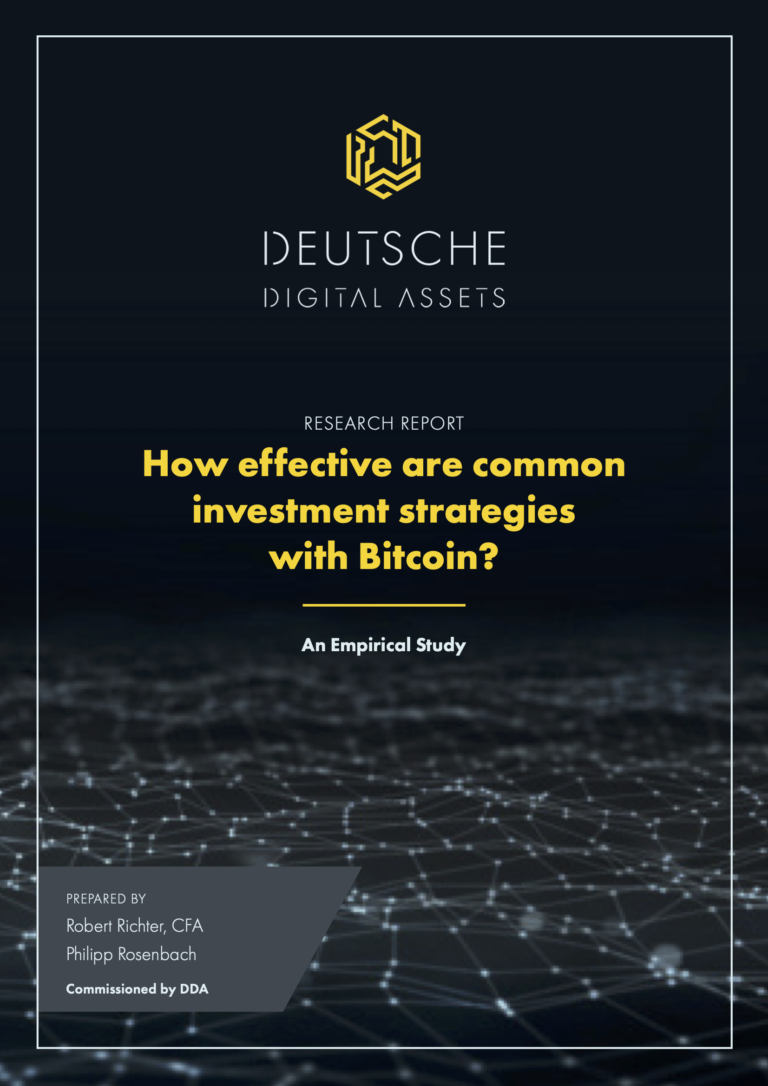
While buy and hold (popularized by the “HODL” meme) has emerged as arguably the most prominent approach to investing in digital assets, actively managed digital asset investment strategies can provide a risk-optimized alternative for investors looking to capitalize on the crypto market’s growth and volatility.
Read on to learn about the benefits of deploying actively managed investment strategies in the crypto asset markets and how Iconic Quant Solutions can help you with that.
What Are Actively Managed Fund Strategies & Why Do They Make Sense in the Digital Asset Markets?
Actively managed investment strategies involve – as the name suggests – actively managing a portfolio to maximize returns while minimizing risk.
The volatility of crypto markets and the extreme returns that can be observed there make it very difficult to manage a portfolio rationally, in particular, because of the FOMO (Fear Of Missing Out), which is exacerbated or because of early take profits that generate massive missing opportunities on important bull trends.
The crypto market is the temple of regrets par excellence for any active manager, especially since the majority of participants are unexperimented. This is why passive strategies (a.k.a. “HODLing”) have gained popularity for their simplicity and their effectiveness over the long term.
However, the crypto market can be characterized by numerous statistical anomalies resulting precisely from the extreme emotions of participants. These anomalies can be captured and exploited by mathematical models in order to generate sustainable outperformance over time in all market conditions.
Through a combination of algorithmic trading strategies – typically executed automatically on exchanges via APIs – actively managed crypto funds are able to generate returns even during a market correction or crypto winter.
In addition to potentially generating returns in falling markets, actively managed investment strategies also benefit investors who have difficulty stomaching crypto market volatility.
Absolute return strategies using both long or short directional exposures, relative value positions and/or arbitrage strategies are designed to generate performance in all market conditions by capturing a physical or a statistical anomaly. Moreover, the risk taken over time is a parameter that can be adjusted or monitored, allowing fund managers to respect predefined drawdowns constraints.
As a result, investors can expect a steady performance without aggressive drawdowns. For investors new to the often volatile digital asset markets, this feature of actively managed funds can be particularly appealing.
Types of Active Investment Strategies

There is a wide range of trading strategies applied by actively managed investment funds. Let’s take a look at a few of the most common approaches.
Trend-Following
The trend is your friend, especially if you are deploying trend-following strategies.
The idea behind trend-following as an investment approach is the belief that markets move in trends, thus providing opportunities to make money by jumping on and off a trend at the right times.
Trend-following investment strategies involve determining price trends using statistical indicators to measure the strength of the trends and ride them until the end to profit from upward and downward long movements in the market.
Through a combination of trend-following indicators, such as Moving Averages (SMA), linear regressions, and acceleration measures, algorithmic trading models can recognize price trends, measure the trend strength and automatically execute trades based on buy and sell signals to generate trading revenue.
Generally, trend-following strategies have a fairly low hit ratio (below 50%) but a positive average gain per trade. The main difficulty with trend-following strategies lies in the ability to enter quickly at the beginning of the trend and, above all, to exit quickly at the end of the trend by getting out as little as possible during the duration of the trend, which is contradictory.
Strong uptrends are one of the hallmarks of the crypto market, making trend-following strategies particularly suitable for this asset class.
Mean-Reverting
Mean reversion is a financial theory that stipulates that the returns and volatility of an asset or security revert back to their long-term averages over time. On a shorter timeframe, a mean-reverting strategy will take a contrarian position in case of statistically abnormal behavior or exaggerated move.
Using a mean-reverting investment strategy, investors can place directional trades (typically using algorithms) on assets that have deviated substantially from their mean levels with the expectation that they will revert back to these levels.
For example, when an algorithm observes a sharp correction caused by a liquidation cascade, it can determine that the price drops too quickly from a statistical point of view, and if it analyses the risk-reward as interesting, it can generate a buy signal that it should keep for a short period of time.
Unlike trend following strategies, mean-reverting strategies signals won’t ease until the price comes back, so adding a stop loss strategy is particularly relevant. Mean-reverting strategies tend to have a good hit ratio but the average gain per trade is lower. The principal difficulty of these strategies results in risk calibration and stop loss monitoring.
Relative Value
Relative value strategies exploit mispricing among two similar or closely related assets or securities to generate a profit by selling one versus the other while remaining market-neutral.
Also known as statistical arbitrage, this approach is popular among investors who prefer not to take a directional bet (to reduce market volatility) while betting on one asset outperforming another.
For example, you could place a long/short trade on EOS (EOS) versus Ethereum (ETH), whereby you buy EOS and simultaneously sell ETH. If the price of EOS increases more (or decreases less) than the price of ETH, the market-neutral trade will be in the money.
A quantitative fund manager can:
- Determine that an asset should outperform another one, using, for example, prices, volumes, or alternative data, such as data sentiment from social networks, followers’ dynamic, on-chain data, and try to implement a trend following strategy on the ratio.
- Detect a statistical abnormal move on the ratio and place a mean-reverting trade.
- Arbitrage prices or make basis trades (playing funding rates by trading futures against spot underlyings).
At Iconic Quantitative Solutions, the asset management team targets absolute returns by deploying a combination of different long-short strategies, including trend-following, mean reversion, and relative value, with a 30% target volatility to provide a steady performance for investors.
The Benefits of Keeping a Constant Risk Budget
When deploying quantitative trading strategies, fund managers can systematically control how much risk they want their algorithmic trading model to take in order to keep this risk constant over time.
In a highly volatile market, positions will be automatically substantially reduced compared to times of low market volatility. Moreover, most quant managers limit the maximum leverage the algorithm can use, which is equivalent to fixing a minimum market volatility level.
While the trading models still execute their specific strategies, the downside risk is constant over time because the algorithms decide how much capital should be put at risk on each trade, given the volatility of the underlying.

It follows that the drawdown has the same significance over time and can be compared. It is not the result of an accident in a market event. This makes it possible to detect strategies that are less suited to current market conditions and to analyze the reasons to decide whether to readapt them, disconnect them or at least reduce their allocation.
To determine how much risk is suitable given the prevailing conditions of the crypto market, quantitative crypto funds would ideally use an Implied Volatility extracted from the options market. However, since the crypto options market is not mature enough, computing volatility inputs using historical data is more relevant.
The Benefits of Minimizing Drawdowns
Traders love volatility. Investors don’t.
Investors want a steady increase in the value of their portfolios over time while avoiding steep drawdowns.
However, anyone who has ever bought Bitcoin (BTC) or any other digital assets knows that steep price corrections are a regular occurrence in the crypto markets.
A strong drawdown requires a significant amount of performance to be generated before being able to make a new high. Bitcoin at $20,000 after seeing $70,000 must be multiplied by 3.5 to make a new high. It is important to limit drawdowns in order to be able to make new highs quickly.
Actively managed algorithmic crypto funds have the ability to reduce drawdowns by reducing the amount of risk that is input into their trading models.
During tough markets, for a strategy and a drawdown that starts to be statistically significant, risk parameters can be automatically tightened to avoid substantially more drawdowns, thus reducing the potential for sharp drops in portfolio value for investors.
The Benefits of Blending Decorrelated Strategies to Optimize Your Risk/Return Profile
Being able to combine uncorrelated strategies – such as trend-following and mean-reverting – enables quantitative fund managers to increase diversification and reduce global volatility.
As the strength of price trends and the likelihood of mean-reversion, for example, are not correlated with one another, multi-strategy quant funds can generate uncorrelated returns.
While correlations between different asset classes can break down, the uncorrelated nature of actively managed strategies tends to remain constant over time, enabling quantitative fund managers to further optimize the risk profiles for portfolios.
The different strategies do not have the same position duration horizons. If they can fortuitously be in the same direction at a given moment, this situation cannot be a situation of equilibrium and will not last because they play opposite dynamics. In the vast majority of cases, a number of signals neutralize each other at least partially, and the final realized volatility is reduced.
Similarly, the drawdowns of the different strategies have no reason to be simultaneous, so the final drawdown of the blend will be significantly lower than the weighted average of the drawdowns of each strategy. This effect is called diversification.
Finally, a certain number of algorithms allow for optimizing the compositions of strategies with the aim of minimizing drawdowns, minimizing volatility, or maximizing the volatility performance ratio.
Opening the Door to Tailor-Made Investment Solutions
Algorithmically powered, actively-managed investment strategies enable asset managers to offer tailor-made portfolios to their customers.
Iconic Alpha AG is the newly launched actively managed crypto investment arm of Iconic, specializing in quantitative and algorithmic trading solutions.
Through a combination of long-short and smart beta strategies powered by proprietary trading algorithms developed in-house, Iconic Alpha offers Separately Managed Accounts (SMAs) to high-net-worth individuals and professional investors looking for exposure to the crypto markets without the high volatility.
To learn more about Iconic Quant Solutions and how you can invest in an actively managed crypto fund, click here.
About Iconic Funds
Iconic Funds is the bridge to crypto asset investing through trusted investment vehicles. We provide investors both passive and alpha-seeking strategies to crypto, as well as venture capital opportunities.
We deliver excellence through familiar, regulated vehicles offering investors the quality assurances they deserve from a world-class asset manager as we champion our mission of driving crypto asset adoption.
Recent News
- Bitcoin vs. Gold: Why You Are Probably Better Off Buying “Digital Gold”
- Why Bitcoin’s Volatility Shouldn’t Scare You
- How Green Mining Will Become the Norm for Bitcoin Network
- How accurate is the Bitcoin Stock-to_Flow Model?
- How Layer 2 Solutions Are Helping Ethereum Scale
Iconic in Press
- ETF stream: White-label issuers in Europe quietly tripled in a week
- ETF strategy: Iconic Funds debuts world’s first ApeCoin crypto ETP
- Das Investment: Kryptowährungen kommen 2022 im Mainstream an
- Private Banking Magazin, Bitcoin – das perfekte Beispiel für ein ESG-Investment?
- Institutional Money, Krypto-Manager steigt bei Family Office ein
- Morningstar, Iconic Funds Expands Product Range With a Physical Ethereum ETP
Recent Research Reports

How did portfolios perform during the pandemic? ➡ Download here
Analyzing the Primary Value Drivers of Leading Cryptocurrencies ➡ Download here
How Effective are Common Investment Strategies with Bitcoin? ➡ Download here
Investigating the Myth of Zero Correlation Between Crypto Currencies and Market Indices ➡ Download here
For further information, please visit deutschedastg
Legal Disclaimer
The material and information contained in this article is for informational purposes only. Iconic Holding GmbH, its affiliates, and subsidiaries are not soliciting any action based upon such material. This article is neither investment advice nor a recommendation or solicitation to buy any securities. Performance is unpredictable. Past performance is hence not an indication of any future performance. You agree to do your own research and due diligence before making any investment decision with respect to securities or investment opportunities discussed herein. Our articles and reports include forward-looking statements, estimates, projections, and opinions. These may prove to be substantially inaccurate and are inherently subject to significant risks and uncertainties beyond Iconic Holding GmbH’s control. We believe all information contained herein is accurate, reliable and has been obtained from public sources. However, such information is presented “as is” without warranty of any kind.














